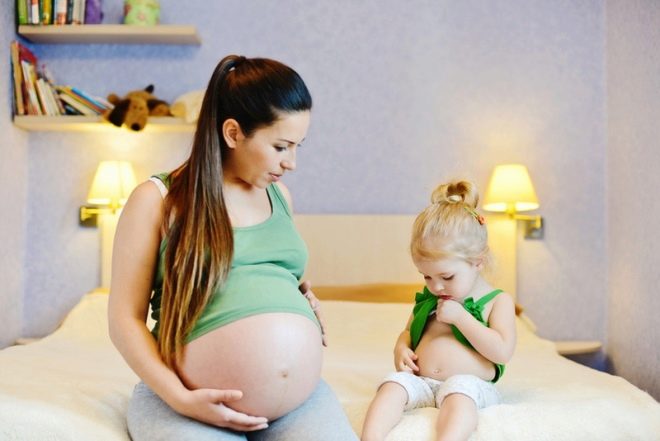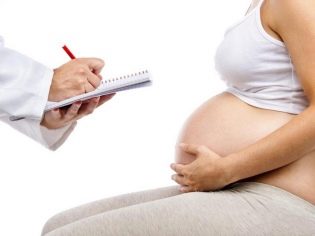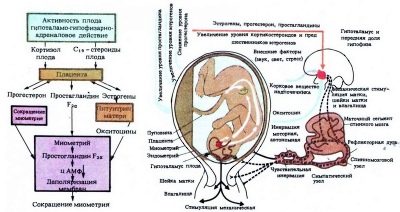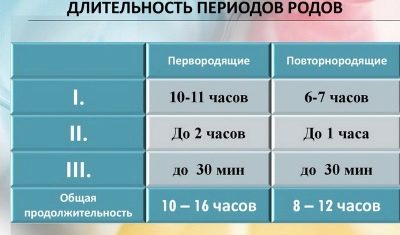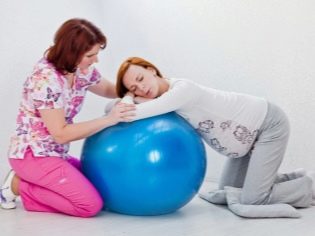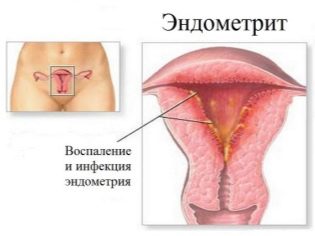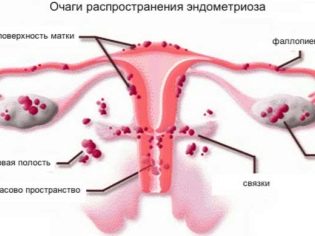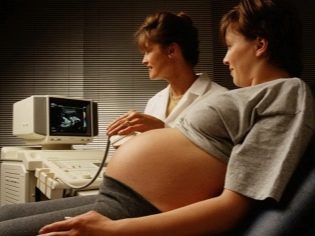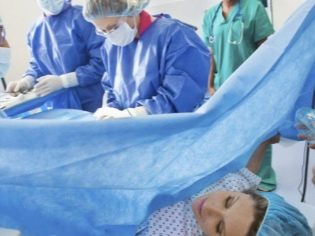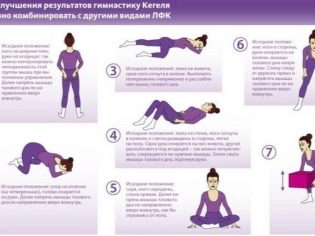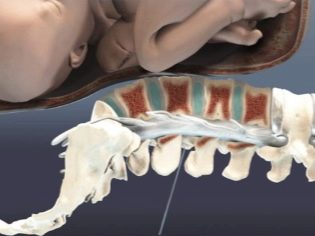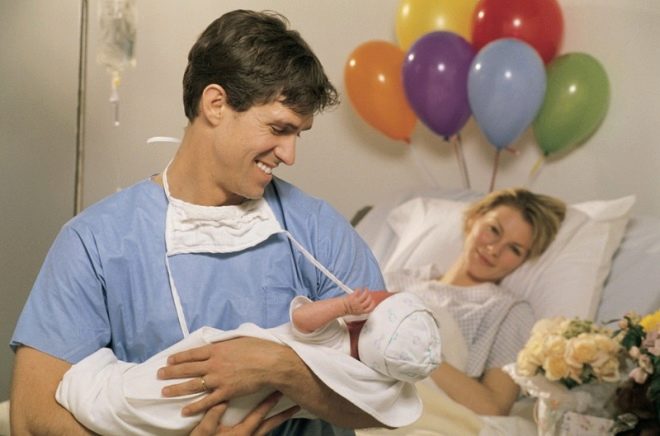On which week are the second births more often according to statistics, how are they going and how long do they last?
Only at first glance, the second birth seems simpler than the first. If during pregnancy, the firstborn in women there are a lot of questions on the signs, duration and characteristics of the generic process, then when you re-pregnancy, everything seems familiar and understandable. In fact, the second birth requires at least a detailed explanation, because they have specific features that women may not even guess. In this article we will talk about the differences between the second genera, when they start and how long they last.
When to give birth?
The majority of Russian families are deciding on their second child today. In the USSR, the second child was considered, if not a luxury, then the maximum number of children per family. Today, attitudes toward large families have changed, and more and more parents are deciding not only about the need to have a second baby, but also the third and fourth.
The second child is a more informed choice of parents than the firstborn. It is no secret that the first baby is often given birth because of “it happened”; among those who come to the hospital for the second crumb, there are not so many “unplanned” ones. Parents already know what they are going, what difficulties and responsibilities they will have to face.
The second pregnancy usually proceeds more smoothly, unless, of course, it is not associated with complications and pathologies. In the process of carrying the crumbs to my mother a lot is familiar and clear. She already knows what tests and why she gives, why you need to visit a gynecologist on time. But regarding the timing of childbirth incomprehensible to a pregnant woman more than when carrying the first child.
Popular rumor says that the second child is usually born before the first child. There is some truth in this. Urgent childbirth in obstetrics is considered to be childbirth, which occurs during the period as close as possible to the DA - the estimated date of birth. But the date indicated in the exchange card is only an approximate landmark. During this period, no more than 5% of babies are born. Births that occur are considered to be timely. from 37 weeks of gestation to 42 inclusive.
The second children rarely wear up to 42 weeks, even up to 40 weeks in the mother’s tummy not every baby is “sitting”. The cervix of a woman who has already given birth is weaker, it softens and opens more quickly, and therefore the pressure of the head of the crumbs on her from the inside ultimately leads to the fact that childbirth begins before 40 weeks. Most often the second birth occurs between 38 and 39.5 weeks of gestation.
But the maternal factor (the state of the cervix and the birth canal) is not the only one that affects the duration of labor. There is also a fetal factor. If for some reason the child is not ready for birth, childbirth will not begin.
In order for regular reflex labor to begin, it is necessary that a sufficient amount of oxytocin, estrogen be produced in a woman’s body, and that progesterone concentration is lowered, the cervix becomes soft and smoothed, the uterus tissues are prepared for contractile activity, the fetus is sufficiently matured . The process of onset is very complex from a chemical, biochemical and physiological point of view.
A surprising fact: second births are often “ordered” by women.If a pregnant woman is initially set up to give birth to a baby by a certain date - the birthday of her husband, to the beginning of his vacation, then with a probability of up to 80%, this is exactly what happens. To give this a clear explanation from the point of view of medicine and science is difficult, it is possible that there is an auto-training effect.
Duration
Another common popular opinion regarding the second birth is duration. It is alleged that the birth last less than in the first case. There is also a great deal of truth in this. If women with first birth give birth from the first contraction to the afterbirth can take from 9 to 14 hours or even more (delivery that lasts more than 18 hours is considered prolonged), women who give birth to the maternity hospital for the second time usually give birth from 6 to 8 hours (rarely - 10 hours). Obstetricians talk about fast and rapid second birth, if the whole process ends in 2 hours. In primipara criterion of speed of labor activity - 4 hours.
Reducing the time of childbirth is primarily due to the better preparedness of the female body for labor, attempts. The muscles are more stretched, the genital tract and the cervix "remember" what and in what sequence should occur. The genital tract is more elastic, whereas at first birth the child encounters serious resistance when passing through them.
All stages of childbirth proceed faster the second time, and this is a fact. Contractions are shortened due to faster opening of the neck, attempts - due to muscular elasticity. The only stage at which a woman can stay longer than during the first birth is the stage of birth of the afterbirth. It is the stretching of the uterine tissues that leads to a tighter fit of the placenta, so its birth can be difficult, but not all.
The duration of labor is reduced not only for anatomical and physiological reasons. An experienced woman in labor already knows how to breathe, when to push, how to relax, how to perform the commands of an obstetrician, and this is an important skill.
Do all women have a second birth faster than the first? The unequivocal answer to this question, unfortunately, is impossible to give. Any childbirth, regardless of what they are in a row, are individual and unique in their own way. Therefore, there are those who have given birth to their second child as much in time as the first child, and even those who spent more time in the second birth than the first time.
But still, for most women in labor, the repeated process is more intense, more energetic and less painful. Correct behavior, psychologically higher preparedness for the process, understanding of what is happening and the absence of alarming uncertainty that torments the first-eaters, in this case do their job - natural mechanisms of anesthesia work, resulting in a woman noting that childbirth was not associated with acute and intolerable pain reactions .
How is everything going?
All stages of labor will be exactly the same as for the first time, but they will proceed with some peculiarities. Even if the firstborn was born difficult and painful, it is not necessary to recall horrors and nightmares with the first contractions in the second clans (drawing them with darker colors than it was in reality), since the second clans will feel differently.
The first stage of labor is labor, if, of course, labor does not begin with the discharge of water (this happens in about 10% of cases). The first contractions are latent. In the first birth, they are not associated with acute pain, and in the second they very often go unnoticed. Slightly pulls the lower back, slightly nagging lower abdomen. For the last month of carrying a fetus, a woman gets used to such sensations, and therefore can not always identify the beginning of labor. In addition, the repetitive one adjusts to about the same beginning as the first time, and this is the main mistake.
As a result, when the expectant mother begins to realize that she started having regular labor pains, the cervical dilatation is already sufficient to go to the hospital. The latent period, which lasts up to 8 hours for nulliparbids, is reduced to 5-6 hours for women with second births, after which quite frequent contractions take place every 5 minutes and the disclosure reaches 3-4 centimeters.
Active contractions that follow latent ones for multiparous lasts no more than 3 hours (in the first birth - up to 5-6 hours). This period should be spent no longer at home, but in the hospital. Right here, comfortable poses that come to mind will be useful in time, in which it is easier to wait out a fight. At first birth, a woman tries different options, selects a comfortable body position. At the second, she already remembers in which position she was well the last time, and immediately does so as it will be easier and more comfortable. This greatly facilitates the second stage of labor.
The third stage - transitional contractions, lasts for the second birth, usually about half an hour. The uterus reaches its maximum disclosure, and with a vaginal examination, its boundaries are no longer determined — the head of the baby is ready for birth.
When a desire arises, it is hard to squeeze, with an increase in pressure downward, the retractor usually clearly knows that it's time to call the medics and go to the delivery room, since the attempts begin. If the birth is not the first, usually by this time the outflow of water already occurs.
The second stage of labor begins. At this time, it is important for the woman to breathe correctly to help the baby be born faster. The head is born first if the fetus is located in the head presentation, then the hanger. Then the baby leaves the genital tract completely. If the woman in labor does everything in accordance with the requirements of the obstetrician — she is strained when the corresponding team follows, rests when it is required, then the probability of rupture and injury to the fetus during childbirth is reduced.
The need to protect the perineum from tears by surgical dissection (episiotomy or parineotomy) in the second birth occurs less frequently than in the first. The exception is when a woman has scars in the perineum from tears in the first birth, because the probability of a recurrence of the break, if the first was serious and deep, is quite high.
After the baby is born (the second period usually takes no more than half an hour - forty minutes during the second birth), the baby is applied to the breast and transferred to neonatologists for examination, weighing, and Apgar scores. Obstetricians continue to take birth - there comes a third period in which the placenta and the remnants of the fetal membranes should come out of the uterine cavity.
The placenta ("childish place") must peel off from the wall of the uterus, and therefore be born for 1-2 attempts. Uterine contractions usually resume, but they no longer have such a pronounced intensity and are not perceived as painful by a woman. Quite often, during the second birth, there is a need for manual assistance to a weakened uterus - an obstetrician can facilitate separation and exit with one of the existing methods of exposure or separate the placenta manually.
Then the woman enters the early postpartum period, which lasts up to 4 hours. In general, the recovery period from the point of view of obstetricians lasts 42 hours. It is noticed that giving birth again quickly restore power, before they rise from the bed. They are less likely to have difficulties and difficulties with the establishment of a full lactation, with the attachment of the baby to the chest.
If the wards in the maternity hospital are designed for mother and child to stay together, then such women better cope with the care of the newborn from the first hours of its life.
Psychological nuances
Separately, it is necessary to dwell on the psychological readiness for repeated delivery. It is only at first glance that a woman is simpler and easier, more understandable, everything that happens.In practice, female psychologists working in consultations are forced to admit this; a woman who is going to give birth to a second birth is experiencing no less than the first time, and sometimes more.
Indeed, for women whose first birth was relatively easy and prosperous, it is much easier to go for repeated ones. Negative and heavy psychological experience is not. In this case, confidence, calm, balance of the woman in labor do have a positive effect on reducing pain, and on reducing the duration of stages and periods of childbirth.
It is much harder to accept the upcoming births for women who were “not lucky” during the first birth - the labor was difficult, complicated, accompanied by ruptures, postpartum pathologies. They unwittingly transfer the existing experience to the idea of the upcoming generic process and mentally prepare to repeat the negative scenario. They are deeply rooted fear, which does not contribute to reducing pain, or reducing the duration of labor, or easy disclosure of the cervix, because at the physical level, fear causes muscle tension, "clamps" and blocks.
That is why the correct psychological preparation before the second birth is needed no less than before the first, and sometimes more. A psychologist can help in this pregnant woman in consultation, his admission is free. You just need to inform the obstetrician-gynecologist, who monitors the pregnancy, about your desire to talk with a psychologist.
Such classes with a specialist will not be superfluous, and for women, who were first cesarean section, and doctors allowed the second child to give birth on their own. Their fear is even stronger, because each of the expectant mothers is not only afraid of pain and for the health of the baby, but also for the condition of the stitches on the uterus - they can disperse already in the process of labor, the uterus can rupture. They explain to such women that the probability of rupture is small, delivery with a scar on the uterus is taken with special attention and care, moreover, the surgical team is always at the ready, which can carry out an emergency caesarean section at any time if the physiological labor goes according to an unplanned scenario.
It is imperative that you seek help from women who are in difficult social or personal circumstances. Not always the second pregnancy is desired, the spouse does not always support the wife’s desire to give birth to the second baby, the family does not always have sufficient financial support. And therefore, disturbing thoughts about how and what to feed the baby after birth, how to raise it, with what means, sometimes bring the pregnant woman to the next nervous breakdown.
In general, the second pregnancy pleases women more than the first. These happy and difficult nine months are reinterpreted in a new way, with a different mood, a woman collects a dowry for a baby, everything is filled with a deeper meaning. There is almost no time for discussing possible terrible tortures and heavy consequences with the girlfriends of the expectant mother, because the first child requires care, attention, education.
Doctors say that people who are more intelligent are more executive - they do not have to be persuaded to take an analysis or visit an ultrasound examination room. Understanding the essence of the process and knowledge of the characteristics of your own body have a positive effect on the childbearing and on the process of the birth of a baby into the world.
Possible complications
The likelihood of complications after the second birth in women is at the same level as after the first. The only caveat lies in the fact that the likelihood of postpartum hemorrhage in patients who have become twice mothers is somewhat higher than in those who gave birth to their first child. This is due to the greater extension of the uterine wall, weak uterine muscles and neck. It is these two factors that create a certain threat of hypotension and uterine atony in the postpartum period.
The reproductive organ needs to be reduced to its former size, the process of reverse development, the so-called uterus involution, begins.It is this process that twice gave birth to a woman who is weaker, in connection with which the reduction will proceed slowly, abnormally. The doctor is undoubtedly aware of the increased risk, so from the very first hours of monitoring the contractility of the uterus in the puerperal with special attention. If necessary, she will be given contraction drugs that will increase the spasms and will contribute to the discharge of blood lohia and the reduction of myometrial fibers.
It should be noted that with the modern development of medicine, inflammatory and congestive events associated with hypotonia of the uterus, postpartum bleeding due to weak uterine tone are not as common as before. For multiparous, according to statistics, this happens in 0.5% of cases. In almost 100% of cases, a woman, if this happens, is provided with competent and timely medical care, so nothing threatens her life.
The probability of infection in the uterus, the development of endometritis or endometriosis after the second birth is at the level of statistics of the first birth - 1.7-2.5%. The probability of inflammation of the seams in the perineum, if there were spontaneous tears or surgical dissection, does not exceed 3-5%, provided that the woman complies with the requirements of hygiene and rules for the care of seams in the intimate area.
Tangible risk after the birth of the second baby for a woman is represented by viral and other common diseases that can begin already in the early recovery period. Immunity is undermined by childbirth, there was a definite blood loss, and therefore it is rather difficult to resist viruses and bacteria in the body of the puerperal. But with this problem you can cope with compliance with preventive requirements. Also, a woman should remember that in the presence of chronic diseases in the history after repeated birth, the probability of exacerbation of these ailments is slightly higher.
What influences the nature of the birth process and rehabilitation?
What will be the second birth and the subsequent recovery after them, depends on many factors and factors. If desired, the woman herself can assess all possible risks. The doctor in the consultation and the medical staff at the hospital will do it without fail. The probability of deviations from the classical pattern of the second kind described above, and the higher risks of complications, depend on several factors.
- Gap between birth - If the first birth was only a year ago, then both pregnancy and the birth of a baby can be fraught with great risks, because the woman’s body did not have enough time to recover from the first birth. Unpleasant "surprises" can be presented by a too long break (more than 8-10 years). A woman's body “forgets,” the very “muscular memory” is partially lost, which makes repeated labor easier and short, so childbirth can proceed as if for the first time with all the ensuing consequences. The best is considered a break in 2-4 years.
- Age. It is believed that age does not matter for the second or third birth, it is only important for primiparous. This is not true. Over the years, the quality of oocytes deteriorates in women, and therefore the probability of congenital malformations and chromosomal abnormalities in a child is higher. And it does not matter what kind of childbirth is coming. Age women, as a rule, already have chronic diseases that aggravate both pregnancy and childbirth. The likelihood of complications is higher for too young mothers giving birth to a second baby under the age of 19. The optimum age is from 19 to 35 years. But women in their 40s and older may well give birth easily and without consequences for the baby’s health. The main thing is planning of pregnancy, examinations and timely diagnosis.
- Features of the current pregnancy. A single pregnancy usually proceeds more easily than a multiple pregnancy. Fetal bearing and childbirth both in the first and second time aggravate such factors as large fruit, placenta previa, entanglement with umbilical cord.In some cases, a woman, even if she has successfully given birth for the first time, is asked to end the second pregnancy with a planned cesarean section, so as not to expose her and the baby to undue risk.
Do I need training?
A woman who is coming second childbirth, along with the first birth, will be asked to enroll in courses for expectant mothers at antenatal clinics. A woman can remember and refresh her breathing technique during labor and massage techniques for natural anesthesia of contractions. At the courses, experts will answer all questions - about childbirth, and pregnancy, and about caring for the baby.
Parental experience is never too much, especially since almost every year new medicines appear, new methods of providing obstetric care, new methods of pain relief. All this woman will be told at the preparatory courses, and the questions directly in the hospital will be much less.
Courses for women who decide to give birth to their second child with a partner will be especially useful. Partnership deliveries require particularly careful joint preparation, because the husband in the hospital is not an outside observer, but a real participant in the process with his responsibilities.
For a woman who is going to become a mother twice, during pregnancy it is important to keep fit, not to allow weakness and muscle hypotonia - many things depend on their condition during childbirth. Especially recommended are multipurpose kegel exercises. It helps to strengthen the pelvic floor muscles, weakened after the birth of the first child. You also need to eat right, take vitamins recommended by the doctor, avoid stress.
Pain Management Issues
It is recommended for those giving birth to pay attention to the methods of natural decrease in labor pain. The author of one of the most popular is the French obstetrician Fernand Lamaze. This is a comprehensive training that is based on proper breathing, aromatherapy, special relaxation exercises, and auto-training. Only confidence in success and complete muscle relaxation, according to the French specialist, can guarantee less pronounced pain in the process of having a baby.
In any case, a woman giving birth again at any time of childbirth can count on the help of medical personnel. The Ministry of Health is recommended to give women painkillers on demand. To suffer and suffer in childbirth a woman is not obliged, it is contrary to the principles of humanity of the doctor. Therefore, today epidural anesthesia is actively used, in which anesthetics are administered by lumbar puncture into the epidural space of the spine.
If there are no contraindications to such anesthesia, it may well be applied at first, and at second, and at any subsequent birth. Identify contraindications can be in advance by talking with an obstetrician-gynecologist in consultation or with an anesthesiologist at the hospital.
If such an anesthesia cannot be performed for a specific woman for several reasons, she will be offered other methods - medicines with anesthetic and antispasmodic effect, intravenous administration of drugs - muscle relaxants, etc. The possible methods should be discussed in advance with the doctors of the chosen maternity hospital when signing the exchange card in it .
Reviews
According to women, the second birth is completely different from the first. More often they are lighter and faster, but all very individual. Often, when a second child is born, women decide on certain experiments - on vertical childbirth, childbirth in water. But the majority of those having generic experience still prefer the classic version - the maternity hospital. The degree of patient confidence in doctors, according to surveys, also increases compared with the first birth. New mothers are more informed, disciplined.
Only a small percentage of moms claim that the second birth was much harder than the first.
About what mistakes after the first birth need to consider, see the next video.

